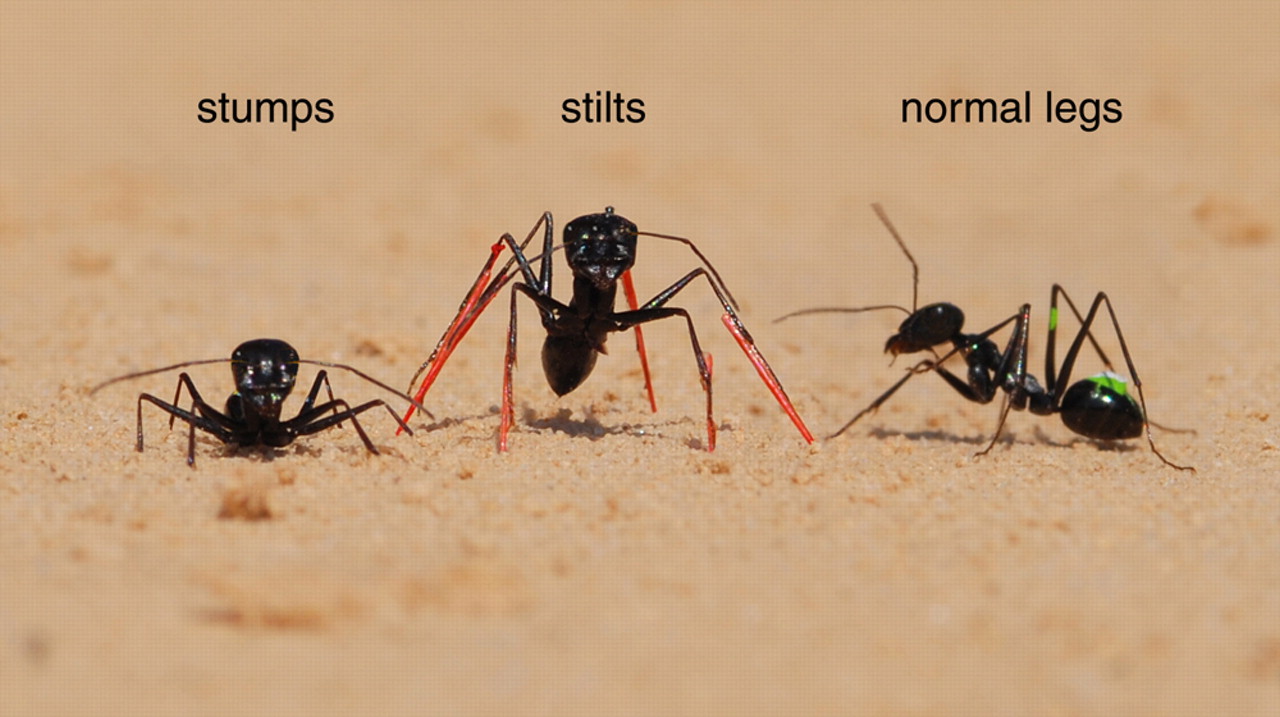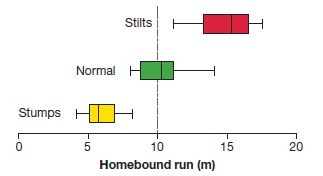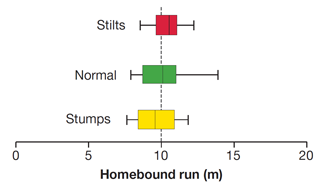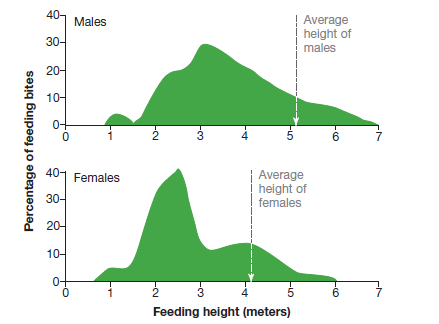The Scientific Method: a Way to Test Hypothesis and Disprove Misconceptions
The scientific method is an organized process for investigating phenomena and validating or challenging previous knowledge.
In order for it to be considered scientific, the method of investigation has to be based on empirical or measurable evidence and has to follow a series of systematic steps.
The basics steps of the scientific method (hypothetico-deductive) are:
- Formulate a testable hypothesis to explain the phenomenon of interest.
- Design an experiment to validate or disprove that hypothesis.
- Collect data to validate the predictions stated in the hypothesis.
- Analyze the data objectively to determine if the hypothesis can be validated or denied.
In order to understand this process let’s look at a particular example.
The Sahara Desert Ant pedometer experiment
Sahara Desert Ants (Cataglyphis bicolor) are desert-dwelling insects that venture far from their burrow scavenging for dead carcasses of other insects that they feed on. Individual ants can wander for hundreds of meters in search for food, but when they return, they don’t follow the same route and instead, they return in a straight line.
Now the question is, how do they do that?
Hypothesis Development
Several hypothesis were proposed to explain this behavior. Some scientists thought that ants take measurements of their angle with respect to the Sun and calculate their position to find the shortest way home. Another possible hypothesis stated that ants could detect the unique odor signature of their surrounding and use it to guide themselves. Additionally, a group of scientists hypothesized that these ants can integrate information on the angles they have traveled and the distance they have gone based on the number and stride of their steps (Pedometer Hypothesis).
Now, let’s see how Matthias Wittlinger and his coworkers went about to test the latter hypothesis [1].
Experimental Design
(Trigger Warning: Ant Cruelty)
To test their hypothesis, Wittlinger and co-workers allowed a group of 75 Sahara Desert Ants to walk from a nest to a feeder through a 10 m channel. Then, they caught the ants at the feeder and split them into 3 groups of 25 individuals:
- One group got the lower end of their legs cut off (stumps group).
- One group got pig bristles glued to their legs to make them longer (stilts group).
- The last group kept their legs intact (normal legs group).

An image of the poor ants that were part of this experiment (Image Source: Antyscience)
Next, they put the ants back in a different tunnel and recorded how far they traveled in a straight line in search for their nest.
If the pedometer hypothesis was correct, the ants with stumps would stop short before reaching 10 meters, the ants with longer legs would walk longer than 10 meters, and the normal ants would walk the correct distance.
If the pedometer hypothesis was wrong, the stride length would not have an effect on the ability of the ants to get back to their nest and all ants would walk the same distance (null hypothesis). A null hypothesis is a general statement that there is no relationship between two measured phenomena.
Data Collection and Analysis

When researchers measured the distance travelled by the different groups of ants, they found that, as predicted, the ants from the stump group stopped at an average distance of around 5 meters, while the stilts group walked about 5 meters too far, and the normal group walked the correct distance.
In order to validate these results, a Control experiment in which the ants were not manipulated by the researchers was needed. A reference or control experiment is a study designed to minimize the effects of variables other than the independent variable. In this case, for example, the independent variable would be the ant leg length.
So, researchers allowed the ants to walk the 10 m tunnel to the feeder and return through the same tunnel without being disturbed or manipulated in any way. If the hypothesis of the pedometer theory was right, the ants would cover the same distance back to the nests despite of the length of their legs. On the other hand, if the results of this second experiment were similar to those of the first one, the null hypothesis would be correct and therefore, the number of steps would not be the reason why the ants can track back the exact distance to their nest.

What they found was that all the ants travelled the same distance back to their nests despite the length of their legs, which supported the validity of the pedometer hypothesis.
The scientific method can be also applied to question theories and disprove them. For instance, a common assumption is that giraffes have long necks to reach food that is unavailable to other animals. This is a popular belief and is part of African folktales. In a 1996 study, zoologists Robert Simmons and Lue Scheepers decided to test that hypothesis [2]. The “Food Competition Hypothesis” claims that, when food is scarce, giraffes with longer necks can reach the leaves of trees that are unavailable to giraffes with shorter necks and other animals. As a result, individuals with longer necks survive these periods of scarcity and produce more offspring than those with shorter necks, and as a result, the average neck length of that particular population increases with each generation.
That hypothesis assumes that giraffes feed high in trees, especially during dry seasons, when food is scarce. To test that assumption, Simmons and Scheepers analyzed the data on the amount of time that giraffes spend eating vegetation at different heights collected previously by other scientists [3]. What they found is that the average height of the giraffes was significantly much greater than the height at which they were feeding was taking place.

Based on these results, Simmons and Scheepers questioned the Food Competition Hypothesis and proposed an alternative explanation based on observations of giraffe biology and behavior (the “Sexual Competition Hypothesis”). According to these researchers, longer-necked male giraffes are able to strike stronger blows when fighting and, as a result, they win more battles and father more offspring than shorter-necked males.
For those of you who are not familiar with giraffe unusual mating rituals, males stablish dominance by fighting each other using their necks (“necking”). When necking, giraffes swing their heads and necks at each other trying to land blows on their opponents with such strength that they occasionally result in one of the fighters being knocked unconscious. Check out this video from National Geographic showing how giraffes fight:
However, a follow-up study about how the necks of giraffes grow found only the barest difference between the two sexes [4], challenging some of the assumptions that lead to the Sexual Competition Hypothesis.
With the data collected to date, it is not clear whether one of the two or even both hypothesis can explain the length of giraffe necks but for our purposes, the important take-home conclusion is that the scientific method provides with a systematic approach to verify and challenge hypothesis through rigorous testing and analysis.
Let me know in the comments if you like this article and thanks for reading!
References:
[1] Wittlinger, M., R. Wehner, and H. Wolf. 2006. The ant odometer: Stepping on stilts and stumps. Science 312: 1965–1967.
[2] Simmons, R.E. and Scheepers, L., 1996. Winning by a neck: sexual selection in the evolution of giraffe. The American Naturalist, 148(5), pp.771-786.
[3] Young, T.P. and Isbell, L.A., 1991. Sex differences in giraffe feeding ecology: energetic and social constraints. Ethology, 87(1‐2), pp.79-89.
[4] Mitchell, G., Roberts, D., van Sittert, S., Skinner, J. 2013. Growth patterns and masses of the heads and necks of male and female giraffes. Journal of Zoology. doi:10.1111/jzo.12013
Minnowsupportproject
Proud member and supporter of the minnowsupportproject - brought to you by @aggroed, @ausbitbank, @teamsteem, and @canadian-coconut
Click the logo below to learn more
)
SteemSTEM
Interested in science, technology, engineering and mathematics? Then, please support @steemstem, a community-supported project aiming to increase the quality and the visibility of well-written, high-quality, STEM-related content. Just click the banner below created by @foundation to join the chat channel.

Solid.... much appreciated on the amount of effort put into this!
Thanks @joey978!
Great article! I appreciate all the effort you put into it!
Thanks @jellyfishdonut!
That was a great article, was fascinating reading the process involved in the ant experiment, did feel a little bad for stumpy ants (lol). It helped me better understand the scientific method.
Thanks for your comment @fernandolopes!
NICE i love it.
this made me hooked to the science feed in steemit :)
The question is: how do they do that? How do they count the steps and the angles etc... The ants have a computer inside better than gps lol
I don't know. Do you have a theory? :)
Interesting stuff. I like that you not only go through the steps of the scientific method concisely, but you show examples along with data.
I'm pretty interesting in Steem Stem, and am kind of surprised I'm just now hearing about it. Is there a way to submit a science article you wrote, or do you just write it and hope it gets noticed?
Either way, this was a quality post and you've definitely got yourself a follower. Take care and keep it up!
There's a channel in Steemit chat where you can submit your article. You can join by clicking on the banner at the end of the article.
Otherwise you can use the tag steemtem for your articles if they fit in that category.
I appreciated the explanation about the scientific method, but I only had one thought after reading this piece: "what happened to the poor, maimed ants?" Were they left to wander around with their bloody stumps for legs? Were they able to continue in their jobs after the experiment, or were they all fired for their disability? I pictured them filing into their local Social Security office to file for benefits. And what of the ants forced to wear stilts? Were they besieged with offers from basketball scouts?
I guess that line from "Zen and the Art of Motorcycle Maintenance" was right. No matter how many questions are answered by the scientific method, it just leads to additional questions at a growing rate. ;)
True. It seems they were fine during the experiment since they were able to find their nest when they were left alone. Let's hope they were left alone and lived a long and happy live.
glad to see you finally joined steemstem :P
I joined the chat. I wish I had time to interact with the people in there.
well using the steemstem tag and writting about science is all you have to do :*
Attaching stilts to an ant's legs. Who says science isn't fun! That was a really cool experimental design.
Thanks for reading and for your nice comment @sustainablyyours!
Great post! The four points you outline in addition to peer-review and reproducibility is what science is all about!
True that!